For a long time, gas was 'cheap' and electricity 'expensive.' Nowadays, it is more often the other way around. This makes it interesting for growers to see if they can heat their greenhouse without gas, with the help of electricity. Infrared heating offers that possibility. Strawberry grower Dutch Berries has therefore constructed a trial in Zuilichem to test a technology from Advanced Heating Technologies (AHT). On March 23, there was an opportunity to view the trial.
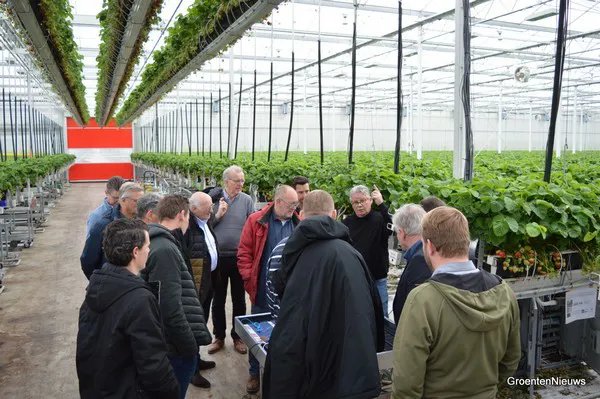
AHT wants to introduce the technique permanently in greenhouse growing. The technique is certainly not new but has come back into the picture for use in greenhouses because of the energy crisis. Interested parties from both greenhouse horticulture and utilities came to take a look on a Thursday morning in March a few weeks ago. In doing so, they saw how the heat is brought as close to the plant as possible so that as little is lost as possible. It is a key advantage of using infrared heating.
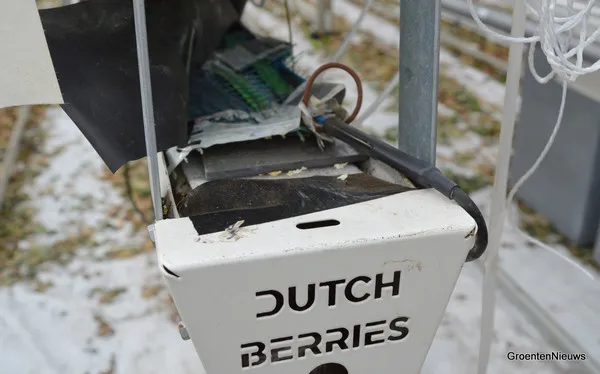
Insulating the underside minimizes the mass to be heated, which is AHT's tip for users. In the greenhouse at Dutch Berries, the container with the substrate is heated to the desired temperature.
Plug in
At Dutch Berries, planting took place on December 5, and AHT's system was installed at the end of November. It involves the installation of both a heating mat made of special metal and a heating ribbon. In addition, control cabinets were installed at the trial plot, accounting for 700 linear meters of infrared heating, and sensors measuring root temperature were placed in the container with the substrate.
Boudewijn van der Wal of Dutch Berries laughingly told the group in attendance that immediately after installation, he couldn't resist plugging in the system to see if it worked. Satisfied, he soon saw that the temperature of the substrate rose and that the system switched itself off when the required temperature at the plant roots was reached.
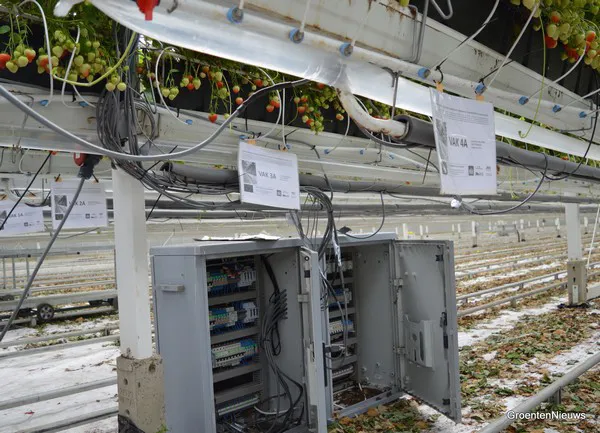
The switch boxes
For the first week after planting, the system was not used, and the greenhouse remained cold, but after that, the growers started using infrared heating. An important note here, however, is that in the 4-hectare greenhouse, tube-rail heating was also used. After all, the remaining strawberry plants also had to be heated. Control was based on data from the measuring box in the greenhouse and the trial section. However, for the trial plot, the grow pipe right next to the trays was switched off.
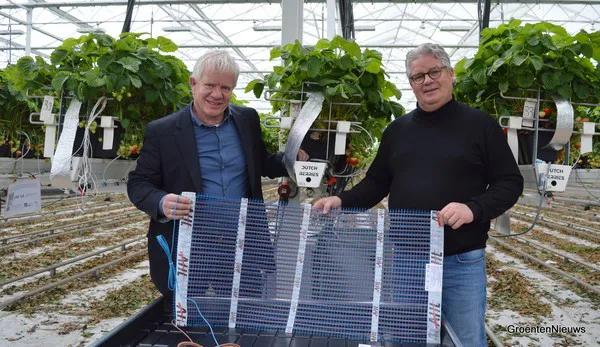
Ron and Jack
Special metal
Before the company went into the greenhouse on Thursday morning, Ron van Wijk of GFSC Consultants and Engineers gave a presentation. Together with Jack van der Meulen of Agro Heating Advice, he is working on introducing infrared heating to the greenhouse industry. Agro Heating Advice is monitoring the trial, which has used a European agricultural subsidy and in which the province of Gelderland is acting as a subsidy provider.
Ron explained how the technology works and what its advantages are. An important factor is the metal used, which is both amorphous and flexible and functions as a superconductor for electricity. The special metal, used for instance, in high-voltage cables but also in golf clubs to absorb hard knocks, comes from the US. AHT then has the heating mats and heating ribbon assembled in Romania. "Worldwide, more than 1 million square meters of it have already been sold," Ron indicated, mainly in utilities.
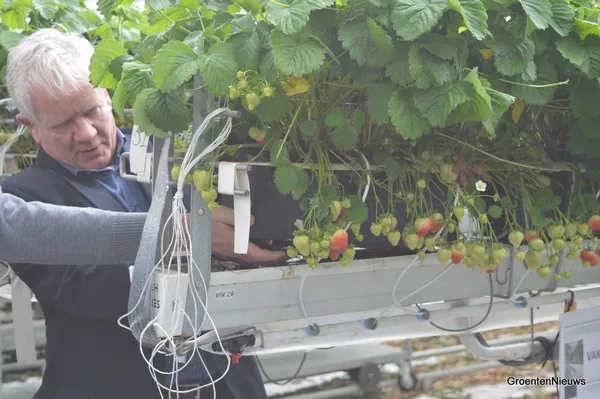
In search of the infrared mat
Radiant heat
All kinds of questions arose, both from grower Boudewijn and from the attendees during the presentation in the local village hall. Ron showed that an earlier trial had been done with the technique of growing Zamioculcas on cultivation tables. There, besides the potential energy savings (59% compared to tubular rail heating in that trial), the main focus was on how to bring the cultivation forward. In doing so, Ron and Jack emphasize that when a crop grows faster thanks to infrared heating, and the growing cycle is shorter, less energy is also needed. Thanks to the trial done at Delphy in 2020, AHT's technology has been included in the Energy Investment Allowance (EIA) list since 2021.
The study with Zamioculcas also looked at the plant itself. Among those present, questions arose about how the plant experiences it when it is warm nearby but the ambient temperature is lower because, with infrared heating, mass is heated and not air. Experience from utilities and people shows that radiant heat "catches on" in people. If applied in the right place, such as on the terrace near the legs (better than from above, as is often done now), people experience enough warmth not to find the slightly colder ambient temperature unpleasant. However, plants do not indicate this as easily as people do. Measuring with additional sensors can give more of a clue about this.
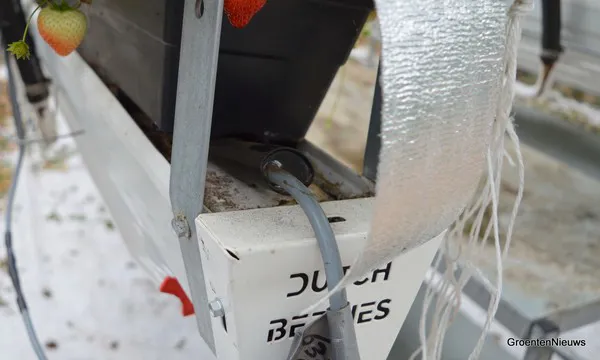
Ribbon heating. The temperature was first set at 18 degrees Celsius and later divided to 15 and 21 degrees Celsius in the trial area.
No special measurements were taken in the trial at Dutch Berries. Besides the sensor for root temperature, no additional sensors, for example, for leaf temperature, were used. After about four months of growing with infrared heating, Boudewijn and grower Job van der Wal, who also joined in briefly in the greenhouse, conclude that they see no adverse effects, for instance, in terms of setting or moisture. It is still difficult for the growers to substantiate the possible energy savings. The growers like to compare the number of cubic meters of gas saved with the energy demand of infrared heating. AHT provides energy consumption figures on this at the end of the trial, Jack and Ron told us.
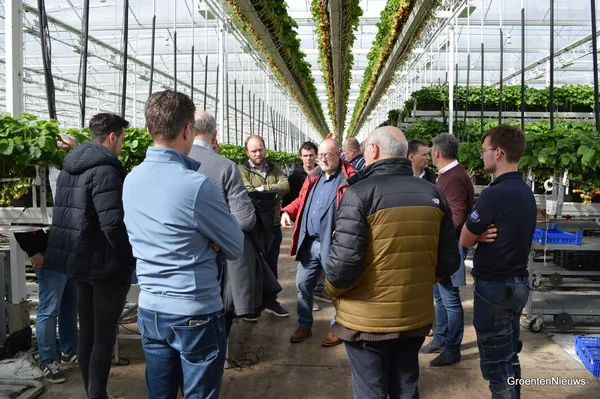
At Dutch Berries this winter, they saw that the crop "bloomed a little and gave red fruits earlier."
Saving gas and harnessing power
"If you want to change somewhere, you have to start somewhere," Boudewijn summed up the main reason for doing the trial on behalf of the strawberry growers. The growers are looking for future-proof ways to heat strawberry greenhouses. Infrared could be one of them if it works well and, not unimportantly, saves the grower on natural gas usage.
Currently, the grower, with an area of 24 hectares spread across those contiguous greenhouses, counts on CHPs and a boiler for heating. There is also a power connection. However, like in more places in the Netherlands, this is limited where feed-in is concerned. It makes growers want to do something with their self-generated power. Boudewijn said he calculated that 14% of the hours in 2022 had a negative electricity price. At that point, strawberry growers want to do something with that. Putting the power into infrared heating could be an interesting option.
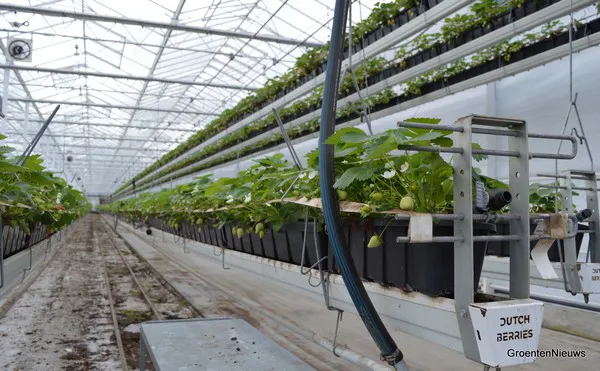
The growing tube, pictured here in another greenhouse, had been turned off and taped in the trial area.
A next trial, which Dutch Berries might be keen on, should test in a cold greenhouse, the growers note. Then it would be easier to see the effect of infrared heating when there is no tube rail and/or grow-tube heating.
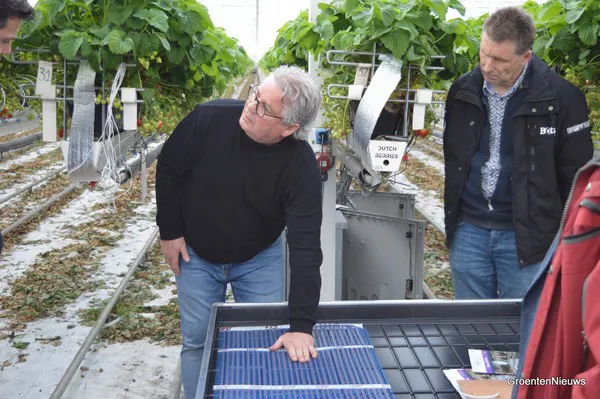
Jack shows a trial set-up with an infrared mat on a grow table, as can be used in pot plants, for example.
As the morning progressed, while exchanging knowledge and ideas, there appeared to be plenty of interesting questions to explore. Ron and Jack, on behalf of AHT, want to learn from the trial and the visit of the interested parties, especially what information about their technique is relevant for growers. In this trial, the two parties will continue together until July. The winter has, on the face of it, been successful. The start is there, and that is exactly what Dutch Berries was all about in the first place. Now all that remains is the arithmetic in terms of energy.
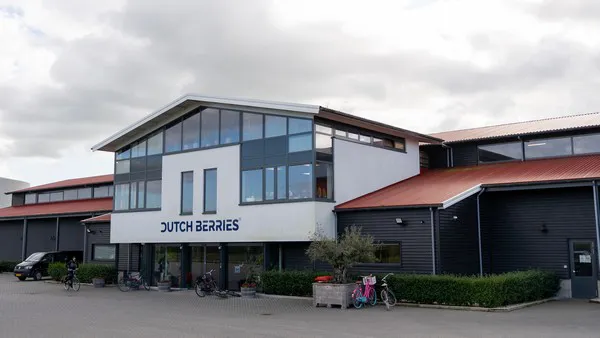
The project has benefited from subsidies.

For more information:
Ron van Wijk 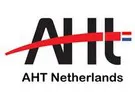
Advanced Heating Technologies
r.van.wijk@aht-netherlands.com
www.ahtinternationalgroup.com
Jack van der Meulen
Agro Heating Advice 
jack@heating-advice-international.com
www.agro-heating-advice.com
Boudewijn van der Wal 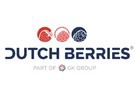
Dutch Berries
info@dutch-berries.com
www.dutch-berries.com
